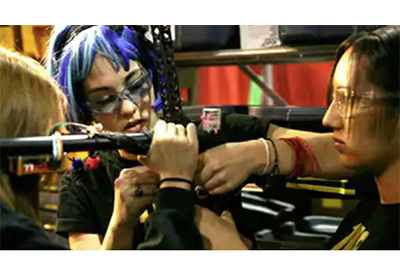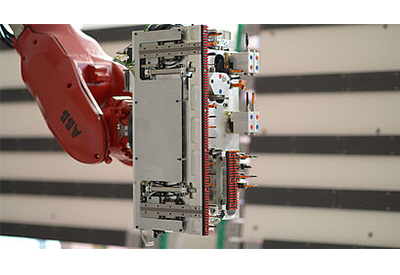Building Robots and A Better Tomorrow with STEM

March 25, 2021
When it comes to STEM Education and career opportunities, Parker Hannifin and international youth organization FIRST are closely aligned.
Founded in 1989, For Inspiration and Recognition of Science and Technology (FIRST) is probably best known for its annual Robotics Competition, where competition teams design, program and build a robot starting with a standard kit of parts and common set of rules to play on a themed course.
Parker has been involved since the early days of the competition as a funder and supplier of valves and fittings in the robotics kits. Over the years, individual Parker team members across the globe have also signed on to mentor students, start teams of their own and even help to establish new regional chapters.
Indeed, both organizations are actively working to level the playing field and help more young people get into the game.
“We established the Buckeye Regional more than 20 years ago,” explains Pete Buca, Vice President Sustainability and Innovation Processes at Parker and joint chairman of the FIRST Buckeye FRC Regional Competition. “Today, the Parker Hannifin Foundation is one of its largest funders.”
In all, Buca estimates Parker sponsors between 30 and 50 teams as well as several regionals around the country. In 2020, Parker helped to start five new Cleveland teams focused on engaging disadvantaged youth with STEM-related activities and opportunities in higher education. While the competition was ultimately canceled last year as a result of the coronavirus pandemic, Buca expects the work will resume.
Hands-on, real-world STEM experience is really just the tip of the iceberg for students. Under strict rules and with limited time and resources, the FIRST Robotics Competition has teams of high-schoolers building industrial-size robots to play a difficult field game in alliance with other teams, while simultaneously fundraising to meet their goals, designing a team brand and advancing STEM within the local community.
Each regional requires about 150 volunteers and the costs associated with hosting the competition itself can accumulate quickly, depending on scale and how many teams are involved. Not only is the design and construction of a human-sized, ramp-climbing, Frisbee-throwing industrial robot complex. So too is the business plan these teams are responsible for creating.
“In the span of six weeks, a team has to come together and think like a design business, like a manufacturer to assemble and build the product, like quality control, like a marketing firm,” adds Buca. “It’s less to do with the end result and more about engaging our volunteers and community members to empower our kids to do something they never thought possible.”
And that’s what makes FIRST such a great fit for Parker. The only thing better than Enabling Engineering Breakthroughs that Lead to a Better Tomorrow is inspiring and empowering kids to do the same.


